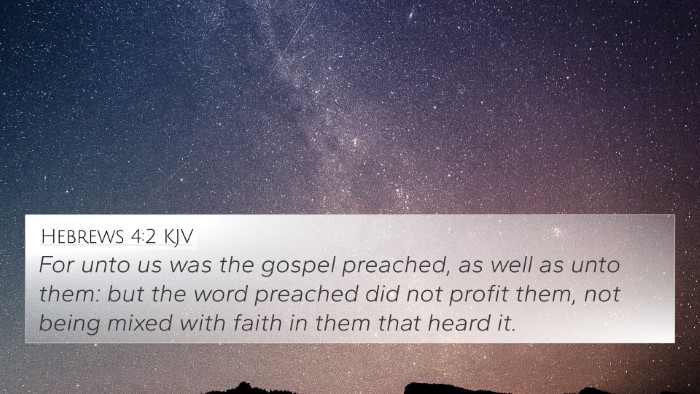Understanding Luke 8:48
Luke 8:48 states: "And he said unto her, Daughter, be of good comfort: thy faith hath made thee whole; go in peace." This verse encapsulates a significant interaction between Jesus and a woman who had suffered for many years due to a health issue. Here, we explore its meanings, implications, and connections with other Bible verses.
Contextual Analysis
This verse occurs in the broader context of Luke 8, where Jesus performs various miracles and teaches about faith. The woman had touched the hem of His garment in a desperate act of faith, believing that even a touch could heal her condition (Luke 8:43-44). Jesus, aware that power had gone out from Him, engages her, emphasizing her faith's crucial role in her healing.
Key Themes
- Faith: The verse highlights the importance of faith in receiving God’s healing and grace.
- Comfort: Jesus addresses the woman as "Daughter," conveying a sense of belonging and affirmation.
- Peace: He sends her away with a blessing of peace, emphasizing the holistic nature of her healing.
Insights from Commentaries
Matthew Henry: In his commentary, Matthew Henry emphasizes that faith is the means through which we obtain the blessings of Christ. The acknowledgment of her faith illustrates how personal trust in Jesus' power leads to miraculous outcomes.
Albert Barnes: Barnes notes that the title "Daughter" indicates a personal relationship between Jesus and the healed woman, reflecting His compassionate nature. He highlights how true faith manifested in action (her reaching out for healing) is always rewarded.
Adam Clarke: Clarke points out the significance of Jesus’ declaration that her faith made her whole, suggesting that spiritual health is as important as physical healing. The peace Jesus offers is not just the absence of struggle, but a fullness of wellness that encompasses body and soul.
Cross-References to Luke 8:48
Understanding Luke 8:48 can be enriched through various cross-references that illustrate similar themes or elements present in this passage. Consider the following:
- Matthew 9:20-22: The story of a woman healed by touching Jesus' cloak, reinforcing themes of faith and healing.
- Mark 5:25-34: A parallel account of the woman with the issue of blood, detailing her background and Jesus’ response.
- John 14:27: Jesus offers His peace, akin to the peace bestowed upon the woman, suggesting a deeper spiritual connection.
- Luke 17:19: Jesus tells a healed leper that his faith has made him whole, linking faith with restoration.
- James 5:15: The prayer of faith will save the sick, further emphasizing the power of faith in healing.
- 1 Peter 2:24: This verse asserts that by His wounds we are healed, affirming the healing power found in faith in Jesus.
- Luke 7:50: Jesus tells a woman her faith has saved her, illustrating a consistent theme throughout the Gospels.
How to Use Cross-References
Utilizing tools for Bible cross-referencing such as a Bible concordance or cross-reference Bible study guides can help in exploring connections between various scriptural texts. Here are some methods:
- Identify Themes: Look for common themes such as faith, healing, and salvation when investigating related verses.
- Study Context: Understand the context of each cross-reference to appreciate its full meaning and implications.
- Compare Interpretations: Use commentary resources to gain diverse insights into the connections between verses.
Conclusion
Luke 8:48 offers profound insights into the nature of faith, healing, and the relationship between Jesus and His followers. Through comparative Bible verse analysis and cross-referencing, deeper understanding can be achieved, revealing the inter-Biblical dialogue that enriches our spiritual lives.
In search of related verses, exploring keywords like "Bible verses that relate to each other" or "cross-referenced themes in the Bible" provides pathways to greater understanding of this important scripture.
















